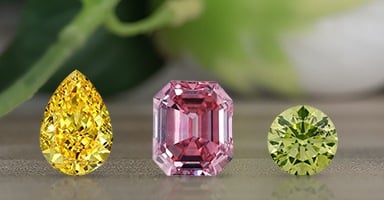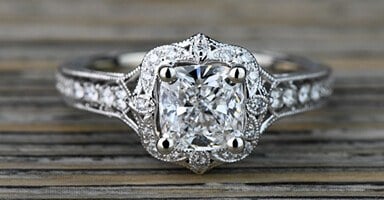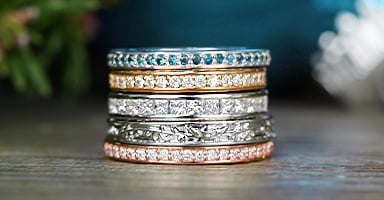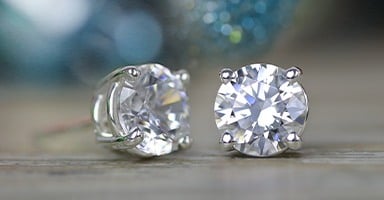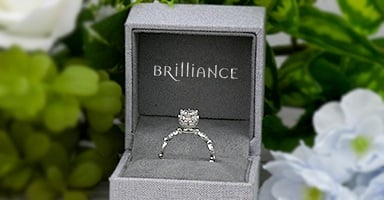CERTIFIED DIAMONDS
What are Certified Diamonds
Certified diamonds are diamonds that have been graded by a gem laboratory based on their "4 C" attributes of Cut, Color, Clarity and Carat Weight. When shopping for a diamond, it is highly recommended to purchase a certified diamond to ensure the quality of the stone.
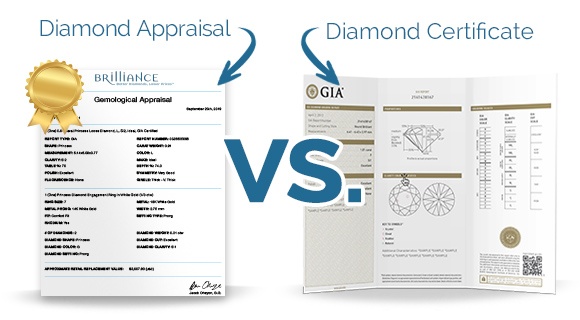
Diamond Certificate vs. Diamond Appraisal
In addition, some retailers will try to pass off a diamond appraisal as a diamond certificate, when there is actually a significant difference between the two documents.
A diamond appraisal is typically prepared by the seller of the diamond to denote the estimated value for insurance purposes, while a diamond certificate is an unbiased analysis of the stone's quality prepared by a gemological laboratory.


Value in Diamond Certification
Certified diamonds have been verified for quality, allowing consumers to purchase with confidence based on the attributes of the diamond rather than blindly trusting the sales pitch of the retailer. When armed with a grading certificate, consumers have a pretty good idea of what the diamond will look like without having to see it in person. Certified diamonds also:
- Hold their value better than their non-certified counterparts, especially for resale and upgrading purposes
- Simplify the comparison process, it's much easier to compare certified diamonds based on the 4 Cs than it is to rely on visual inspection alone
- Broaden the shopping base to include online retailers, resulting in significant savings
Purchasing Certified Diamonds
When purchasing certified diamonds, be sure the diamond certification is from a third-party laboratory rather than one associated with the store, jeweler, or diamond wholesaler, who may offer a biased opinion to facilitate the sale. Also, verify that the third-party laboratory has a history of stringent grading practices and that they've been in business long enough to establish a solid reputation in the jewelry industry. Brilliance recommends the following laboratories, in order of preference: GIA, AGS, EGL, IGI, and HRD.
Diamond Shape, Color & Carat Weight
Choose a shape that flatters your hand and complements your personal style. Round diamonds exceed all other shapes in their ability to reflect light. Learn about diamond shape.
Look for the largest size within your price range that is still good quality. Don't sacrifice quality for size; remember, bigger isn't necessarily better. Learn about diamond carat.
The less color, the better. Diamonds are color graded on a scale from D-Z, with D as the most desirable (and valuable). Learn about diamond color.
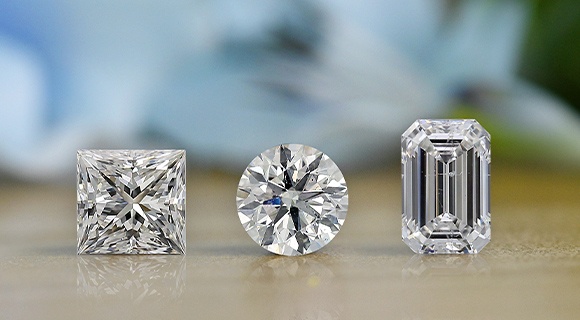

Diamond Cut, Clarity & Fluorescence
A diamond's cut is graded on a scale from Excellent/Ideal - Poor; the better the cut grade, the more brilliance the diamond will emit. Learn about diamond cut.
While flawless is best, inclusions make up the 'fingerprint' of the diamond. Look for inclusions that are not noticeable to the naked eye. The grading scale ranges from FL - I3. Learn about diamond clarity.
Diamond fluorescence, is graded from None to Very Strong. Though fluorescence doesn't usually affect the diamond's quality, it's best to look for grades of Medium, Faint, or None.
